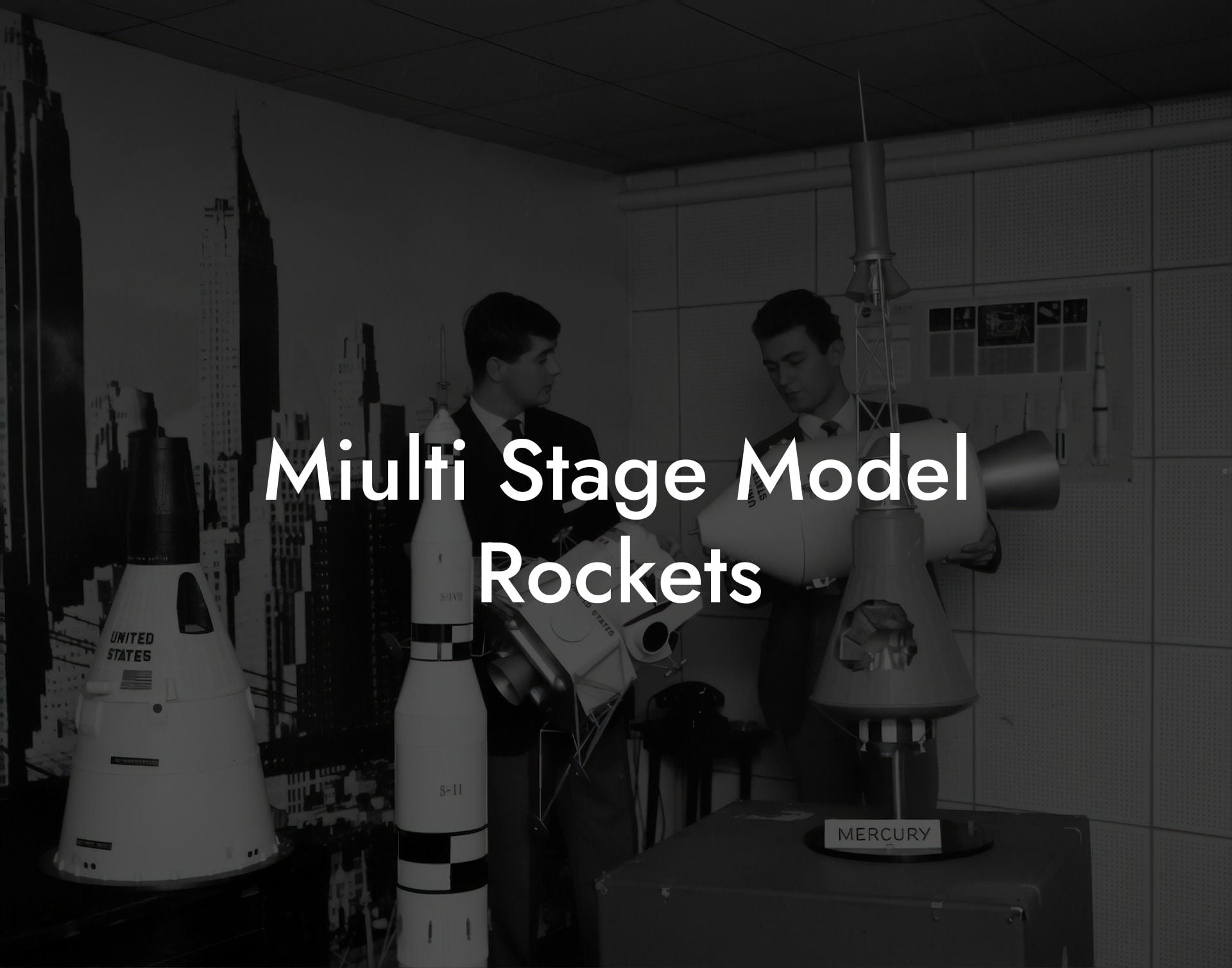Model rocketry can be an exhilarating hobby for those interested in aerospace, engineering, and science fiction. While single-stage rockets can provide plenty of excitement, there's something particularly captivating about multi-stage model rockets. In this comprehensive guide, we will explore the world of multi-stage model rockets, their unique features, how they work, and how to successfully build and launch your very own.
Miulti Stage Model Rockets Table of Contents
What are Multi-Stage Model Rockets?
Why Choose Multi-Stage Rockets?
What are Multi-Stage Model Rockets?
Multi-stage model rockets consist of two or more stages or sections that operate in succession during a rocket's flight. As each stage completes its function, it separates from the rocket and falls back to Earth, allowing the next stage to take over and propel the rocket further. This sequential process allows the rocket to achieve higher altitudes or velocities compared to single-stage rockets.
Why Choose Multi-Stage Rockets?
- Higher Altitudes: Due to the staged propulsion, multi-stage rockets can reach higher altitudes than their single-stage counterparts. This enables the rocket to perform more advanced maneuvers and experiments.
- Faster Speeds: Multi-stage rockets accelerate at a faster rate than single-stage rockets, resulting in higher top speeds during flight.
- Increased Payload Capacity: The additional stages allow for a wider range of payload options, such as cameras, altimeters, and other scientific instruments.
- Greater Challenge: Assembling a multi-stage rocket requires more advanced building skills and offers a more complex and rewarding experience for seasoned hobbyists and aspiring engineers.
Components of Multi-Stage Rockets
While the specific components of multi-stage model rockets may vary, the following are commonly found in most designs:
- First Stage: This lower stage houses the main motor and is responsible for providing the initial thrust to propel the rocket skyward.
- Interstage Section: Located between the stages, this section allows for safe and secure separation during flight.
- Upper Stage(s): These stages are stacked on top of the first stage, igniting one after another as the lower stages separate. Their purpose is to continue accelerating the rocket until the desired altitude is reached.
- Recovery System: Typically located in the uppermost stage, the recovery system safely returns the rocket to the ground after flight. This might include parachutes, streamers, or glide systems.
- Nose Cone: Housing the payload or other electronics, the nose cone streamlines the rocket and reduces drag during flight.
Building and Launching Multi-Stage Model Rockets
The process of building a multi-stage model rocket involves several crucial steps:
- Planning and Design: Determine your rocket's intended purpose, altitude, and payload. This will influence your choice of motors, materials, and overall design.
- Construction: Assemble the rocket according to your design plans or a kit's instructions. Ensure secure connections between stages and carefully install the recovery system.
- Pre-Launch Checks: Verify that all connections are secure, the rocket is correctly balanced, motors are properly sized, and the launch system is functioning.
- Launching: With safety precautions in place, ignite the first-stage motor to initiate the launch sequence. Observe as each stage burns out and separates, allowing the following stage to take over until the rocket has achieved its desired altitude.
- Recovery: Safely retrieve your rocket after it has descended back to Earth, inspecting for any damage or necessary repairs.
Miulti Stage Model Rockets Example:
Imagine building a two-stage model rocket designed for high-altitude flight. The first stage is a powerful D motor that propels the rocket off the launch pad and up to approximately 500 feet. As the fire from the first-stage motor dies out, it ignites the second stage, a C motor, which accelerates the rocket further, ultimately reaching an altitude of over 1,000 feet.
Once the second stage has completed its burn, the recovery system activates, deploying a parachute that gently guides the rocket back to the ground for a safe and successful recovery.
Multi-stage model rockets offer a thrilling and rewarding experience for rocketry enthusiasts and aspiring aerospace engineers alike. With a comprehensive understanding of their components, function, and the steps involved in building and launching one, you are now equipped to take on the challenge of constructing your very own multi-stage rocket.
We encourage you to share this guide with fellow rocketry fans and to explore the many other informative guides available on Austin Rockets. Together, we can fuel our passion for model rocketry and reach new heights of discovery and accomplishment.













